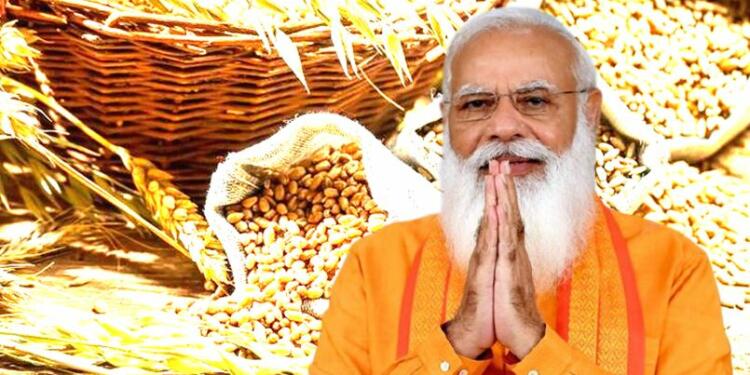- The Poshan Abhiyan directs the attention of the country towards the problem of nutrition and tries to address it.
- With the Poshan Abhiyan, in the coming decade, the country is set to solve the nutrition problem.
Almost 8 years ago, the UPA government brought the National Food Security Act, 2013, as an election gimmick. With the promise to provide 2000 calorie intake per day to everyone, Sonia Gandhi-led UPA government passed the Food Security Bill to provide subsidized rice, wheat, and coarse gain for more than 70% of the population.
However, given the low nutritional value of today’s rice and wheat produced in the country, 2000 calorie intake is not possible with normal grains. To solve the nutritional intake problem, the government started POSHAN Abhiyan in March 2018. Now under this Abhiyan, the grains that are being distributed under various schemes such as food-guarantees and mid-day meals will be bio-fortified in order to increase their nutritional value.
Last year, Prime Minister Narendra Modi released 17 bio-fortified varieties of eight crops which can increase the nutritional value of food staples by several folds. According to the Indian Council of Agricultural Research website, the following bio-fortified varieties have been released by PM Modi: The rice variety CR DHAN 315 which has excess zinc, the wheat variety HD 3298 which is enriched with protein and iron, and the DBW 303 and DDW 48 varieties, both of which are rich in protein and iron.
On independence day this year, the Prime Minister announced that fortified rice will be provided through all Government of India schemes. Secretary, Department of Food and Public Distribution, Sh. Sudhanshu Pandey said that “We have been given a time frame that by 2024 we have to supply fortified rice to the entire public distribution system.”
“I am particularly happy that Ministry of Women and Child Development (WCD) and the Department of School Education & Literacy are looking to the vulnerability of children and students,” he said. “They took decision to supply fortified rice for their Integrated Child Development Scheme (ICDS) programmes and Mid-Day Meal Programmes from 1st of April this year. As a result of which, we got an opportunity to work through an entire ecosystem of rice fortification and prepare ourselves to something which was much bigger,” he added.
Apart from rice, slowly the government is making efforts to fortify other grains that are used as a staple food. The maize hybrid varieties 1, 2 and 3 are enriched with lysine and tryptophan, the finger varieties of millet CFMV 1 and 2 are rich in calcium, iron and zinc. The CCLMV1 variety of small millet is rich in iron and zinc. The Pusa Mustard 32 is enriched with low erucic acid, while Girnar 4 and 5 varieties of peanuts are rich in increased oleic acid and Yam’s Shri Neelima and DA 340 varieties are enriched with anthocyanin. These bio-fortified varieties are 1.5 to 3.0 times more nutritious than their traditional counterparts.
India needs fortified food because the nutrition value of many grains has reduced drastically in the last six decades due to the agricultural revolution. On one hand agricultural revolution exponentially increased food production in India, thus solving the ‘hunger’ problem, but simultaneously, it created a ‘nutrition’ problem because of the overuse of fertilizers (chemical elements) and genetic modification of seeds.
The POSHAN (Prime Minister’s Overarching Scheme for Holistic Nutrition) Abhiyan directs the attention of the country towards the problem of nutrition and tries to address it. In India, kids even in well-to-do families face nutrition problems due to lack of education on diet and low nutritious value of staple diet intakes like rice and wheat. With the Poshan Abhiyan, the 2000 calories per day per person aim of Sonia Gandhi (which could have never been achieved through her methods of increasing food intake when it was not a problem) is being met and in the coming decade, the country will solve the nutrition problem.


































